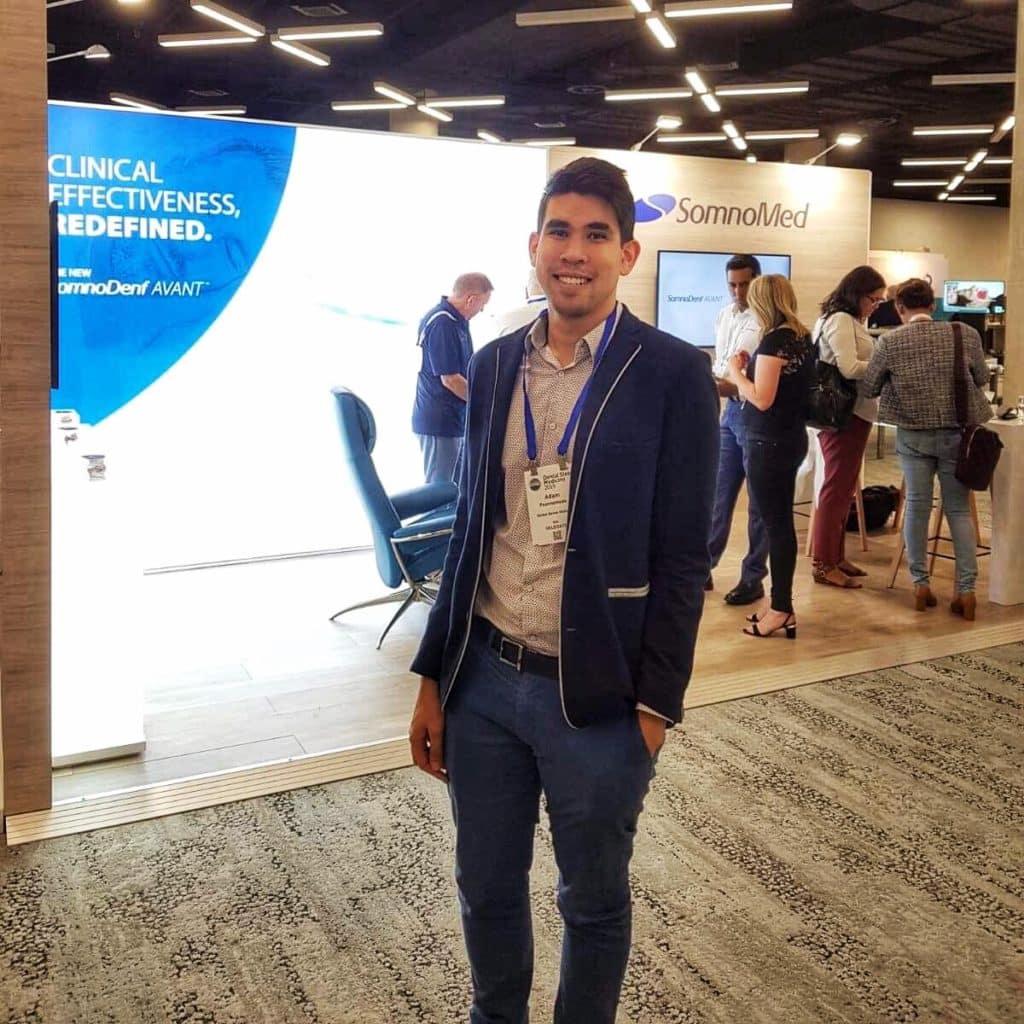A mandibular advancement splint (MAS) is a type of oral appliance that is used to help treat obstructive sleep apnoea. It is typically recommended by your sleep physician for mild to moderate cases.
Give us a call on 9250 8844 if you would like to book in for a consult with Dr Adam Peermamode
Typically a mandibular advancement splint works by holding the lower jaw forward, which opens the airway and makes it less collapsible. Mild cases of obstructive sleep apnoea have been shown to be well managed by a Mandibular advancement splint. The degree of improvement through the use of a CPAP machine is usually better if it is used sufficiently.
However, a mandibular advancement splint is usually more comfortable and easier to use for patients than a CPAP machine. In some cases of moderate to severe obstructive sleep apnoea, a mandibular advancement splint may still be recommended as the treatment option.
Snoring is also reduced by an mandibular advancement splint, and you may be able to get an mandibular advancement splint even if you do not have obstructive sleep apnoea.
A mandibular advancement splint is prescribed by a respiratory and sleep physician, following the diagnosis of OSA. Discuss the possibility of getting an mandibular advancement splint with your primary health care physician, sleep physician or dentist if you think that it is something that you would like to look into.
This may then require a sleep study to ensure that you are receiving appropriate treatment for your needs.
In the cases where the patient wants their snoring addressed but does not have a diagnosis of obstructive sleep apnoea we may require a sleep study still to make sure we aren’t overlooking any possible underlying issues.
Once an mandibular advancement splint is recommended by a sleep physician the patient has a consultation with the dentist. Any dental work that may interfere with the fit of the splint is completed prior to it being made.
Then it is as simple as having impressions taken of the teeth, and a special registration of how the patient bites. This is sent to a specific lab for the appliance to be made. The patient returns a couple of weeks later for the appliance to be fitted and any adjustments to be made.
The degree that the appliance holds the lower jaw forward will usually need some adjustment. Initially the patient will return to the dentist after another couple of weeks for this ‘titration’ to be completed. Depending on the device further adjustments might be able to made by the patient themselves at home.
On average the splint will last 5 years, but this is dependent on how well it is maintained.

Opening Hours:
Mon: 8am – 5pm
Tue: 8am – 7pm
Wed: 8am – 6pm
Thu: 8am – 5pm
Fri: 8am – 5pm
Sat: 8am – 1pm
Sun: Closed






